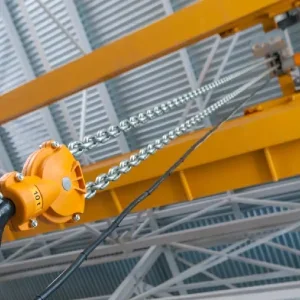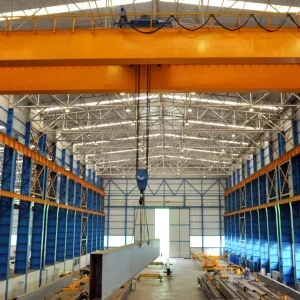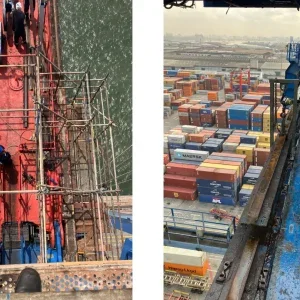The testing took place over three visits to the Wheelabrator Parc Adfer facility in Flintshire, ahead of the commencement of the waste-to-energy operations, which will convert post-recycled waste into sustainable energy for more than 30,000 homes in the region. The operations and associated activities are reliant on the beams, the final six of which were installed in April.
RSS was contracted to proof load test the beams by Lab SA, based in Lyon, France, which constructed the building where the majority of the cranes are installed. The remaining three beams are located on a nearby stack and residue silo.
The main stack beam was 26m, the same height as the cantilevered beam at the top of filter bag house, with the residue silo a further 3m taller. Other heights of lift ranged from 3m to 10m.
Gary Coleman, site engineer at RSS, said: “We needed to complete the tests in line with the stringent requirements of the site. The beams within the penthouse area of the building were required for installing filler bags and a separate contractor required certification of the hoists and beams so they could use them. The contract included the inspection of chain blocks and trolleys as they were installed. Remedial works will be handled as required.
“The client specifically stated that no pulling of the steel structure is allowed anywhere on site. This meant we had to adopt a more complex testing method from start to finish, adding time, cost, and manual handling. We were recommended for the project following our success at a previous waste recovery project, but the two turned out to be very different.
“We carried out testing by using live loads (or weights). We transported weights in our vans to site—a 625kg [weight] and a little basket tare weight [weighing 34kg]. We also bolted a 5t SWL [safe working load] bracket into the concrete floor, held in place with four M12 x 120mm through bolts. Once we had completed testing, we used a grinder to cut off flush to the floor and hammered the remainder below floor level to ensure no trip hazard remained.”






